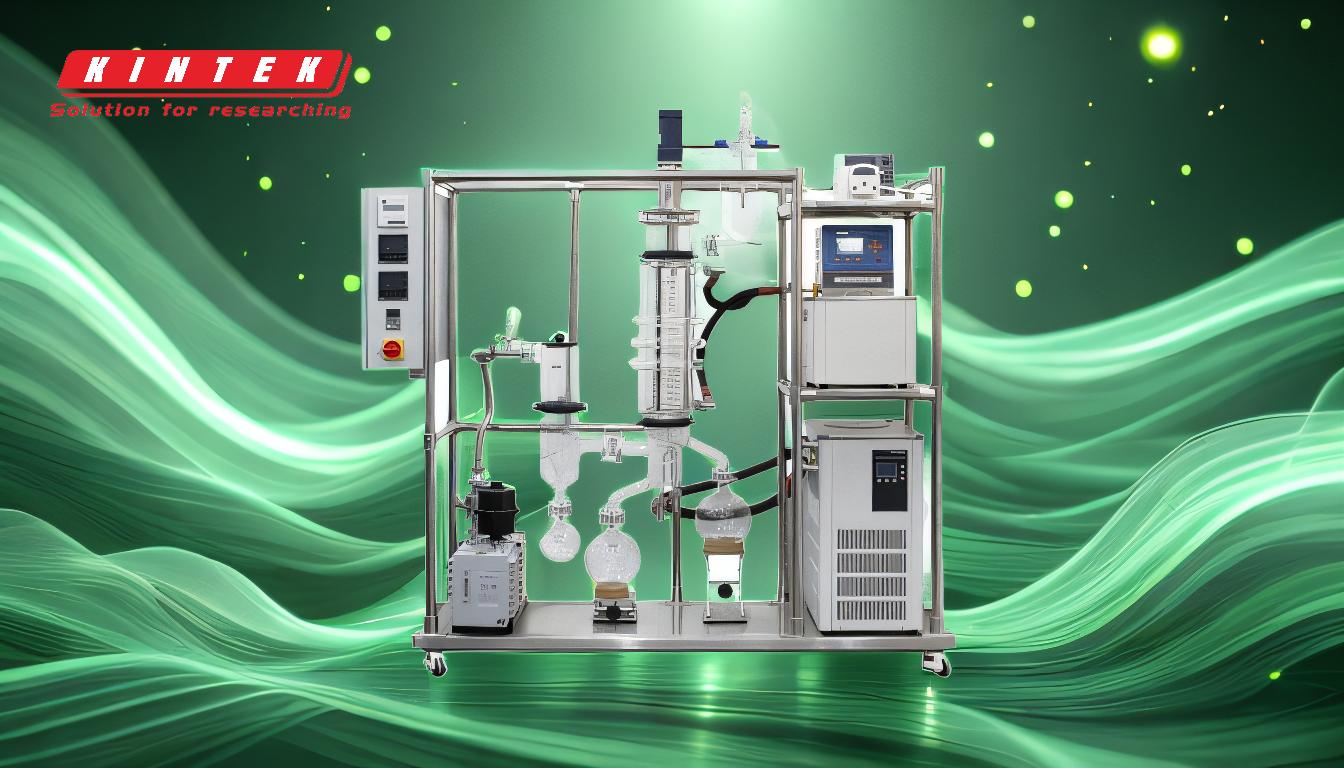Vacuum distillation offers significant advantages over atmospheric pressure distillation, particularly for temperature-sensitive compounds. By reducing pressure, it lowers boiling points, enabling distillation at lower temperatures, which minimizes thermal degradation and preserves the quality of sensitive materials. This method is cost-effective, enhances purity, and allows for efficient separation of close-boiling mixtures. However, it requires specialized equipment and slightly higher operating costs due to the need for vacuum systems. Overall, vacuum distillation is ideal for high-purity applications and delicate compounds, though it may not be necessary for all distillation processes.
Key Points Explained:

-
Lower Boiling Points and Reduced Thermal Degradation:
- Vacuum distillation reduces the pressure inside the system, which lowers the boiling points of the compounds being distilled. For example, water boils at 100°C at atmospheric pressure (1000 mbar) but can boil at much lower temperatures (e.g., 45 mbar) under vacuum.
- This is particularly beneficial for temperature-sensitive compounds, such as cannabinoids, essential oils, or organic compounds, which may degrade or combust at higher temperatures. Lower temperatures preserve the integrity, quality, and taste of the distillate.
-
Enhanced Purity and Yield:
- The reduced pressure and lower temperatures prevent unwanted side reactions, such as polymerization or decomposition, which can occur at higher temperatures in atmospheric distillation.
- This results in higher-purity end products, such as fully decarbed THC in cannabis distillation, and ensures that valuable compounds remain intact.
-
Efficiency in Separating Close-Boiling Mixtures:
- Vacuum distillation is highly effective for separating mixtures with components that have similar boiling points. The reduced pressure increases the relative volatility of the components, allowing for separation with fewer equilibrium stages.
- This efficiency reduces the need for taller or larger distillation columns, lowering capital costs for equipment.
-
Cost-Effectiveness and Scalability:
- While vacuum distillation systems may have slightly higher operating costs due to the need for vacuum pumps and maintenance, they are often more cost-effective overall. This is because they reduce energy consumption by operating at lower temperatures and can process materials more quickly.
- The method is scalable, making it suitable for both small-scale laboratory applications (e.g., mini rotary evaporators) and large-scale industrial processes.
-
Safety and Preservation of Sensitive Compounds:
- The lower operating temperatures in vacuum distillation make the process safer, especially for organic compounds that might react adversely or combust at higher temperatures.
- Short residence times and gentle evaporation further protect sensitive compounds, ensuring a pure distillate without damage.
-
Disadvantages of Vacuum Distillation:
- Specialized Equipment: Vacuum distillation requires specialized equipment, such as vacuum pumps and pressure-resistant systems, which can increase initial setup costs.
- Higher Operating Costs: Maintaining a vacuum system involves additional energy consumption and maintenance, which can lead to slightly higher operating costs compared to atmospheric distillation.
- Complexity: The process is more complex to operate and monitor, requiring skilled personnel to manage pressure and temperature controls effectively.
-
Applications of Vacuum Distillation:
- Cannabis Industry: Used to produce high-purity THC and other cannabinoids without thermal degradation.
- Essential Oils and Fragrances: Preserves the delicate aromatic compounds in essential oils.
- Pharmaceuticals: Ensures the purity and stability of temperature-sensitive drugs.
- Industrial Chemicals: Separates close-boiling mixtures and prevents degradation of sensitive materials.
In summary, vacuum distillation is a superior method for distilling temperature-sensitive and high-purity compounds, offering advantages such as reduced thermal degradation, enhanced purity, and cost-effectiveness. However, it requires specialized equipment and expertise, making it less suitable for simpler distillation tasks.
Summary Table:
| Advantages | Details |
|---|---|
| Lower Boiling Points | Reduces thermal degradation for sensitive compounds like cannabinoids. |
| Enhanced Purity and Yield | Prevents side reactions, ensuring high-purity end products. |
| Efficient Separation | Ideal for close-boiling mixtures, reducing equipment costs. |
| Cost-Effectiveness | Lower energy consumption and scalable for labs or industrial use. |
| Safety and Preservation | Protects sensitive compounds with gentle evaporation. |
| Disadvantages | Details |
| Specialized Equipment | Requires vacuum pumps and pressure-resistant systems. |
| Higher Operating Costs | Increased energy and maintenance costs. |
| Complexity | Requires skilled personnel for operation and monitoring. |
| Applications | Details |
| Cannabis Industry | Produces high-purity THC without degradation. |
| Essential Oils and Fragrances | Preserves delicate aromatic compounds. |
| Pharmaceuticals | Ensures purity and stability of temperature-sensitive drugs. |
| Industrial Chemicals | Separates close-boiling mixtures effectively. |
Ready to enhance your distillation process? Contact us today to learn more about vacuum distillation solutions!












